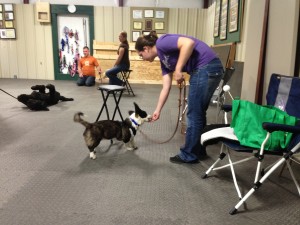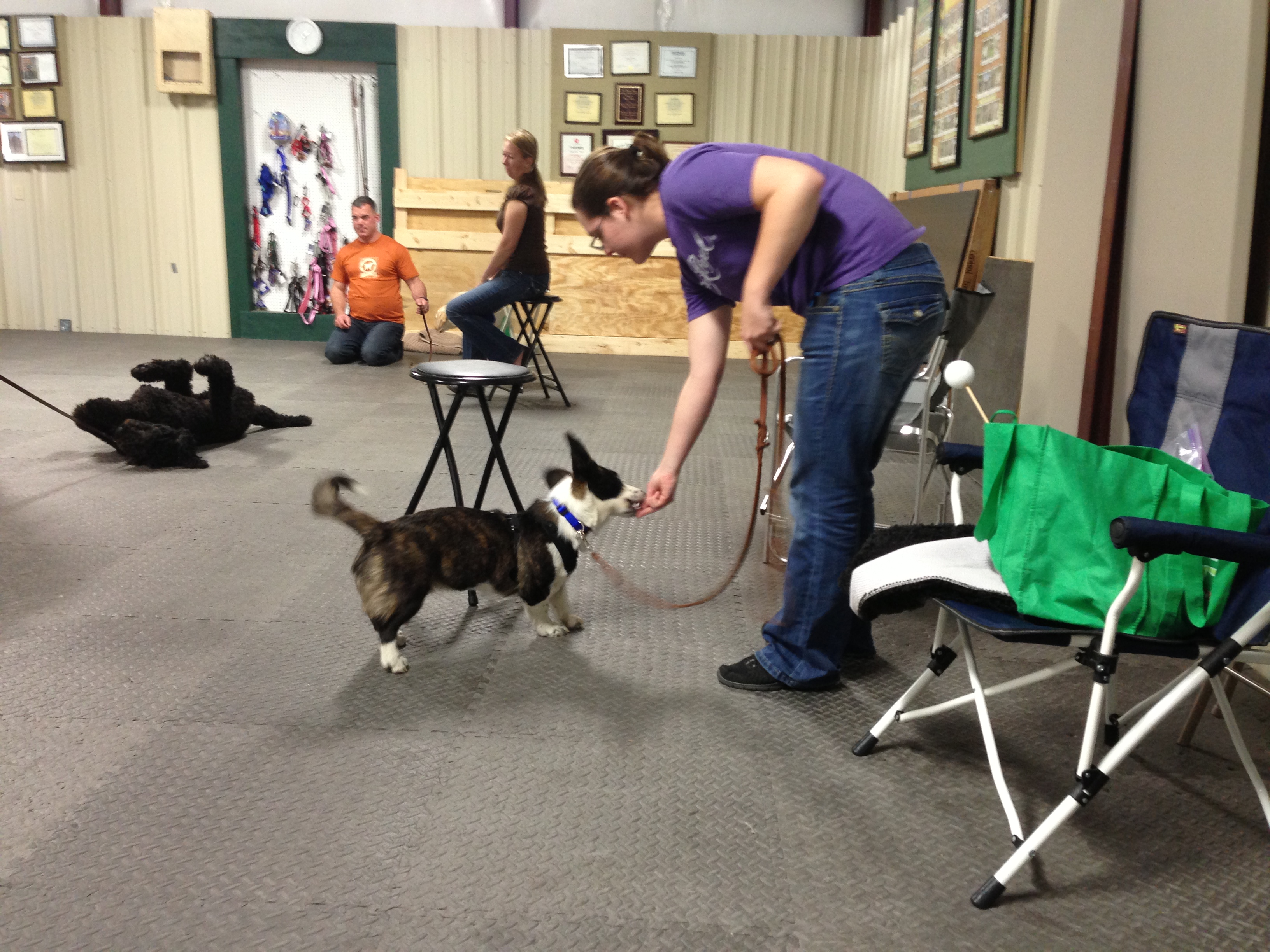 Counter conditioning is when you teach the dog that good things will happen when the scary thing appears. It’s a simple tool to have in your toolbox and there are so many ways it can be applied. I use it a lot with both of my dogs to work with their reactivity to other dogs or foreign objects. It helps them overcome fears and helps them realize that there is nothing to fear.
Counter conditioning is when you teach the dog that good things will happen when the scary thing appears. It’s a simple tool to have in your toolbox and there are so many ways it can be applied. I use it a lot with both of my dogs to work with their reactivity to other dogs or foreign objects. It helps them overcome fears and helps them realize that there is nothing to fear.
Unfortunately, when it’s not done correctly, it can create dogs that are more fearful at worst to no change in behavior at best. You want the scary thing to be associated with the good thing, not the good thing to be associated with the scary thing. In training, timing is everything and there is always a strategy behind every exercise trainers teach.
After, Never Before
Counter conditioning only works when the scary thing predicts the good thing, not when the reward predicts the scary thing. When you practice it out of order, you run the potential of decreasing the value of that reward and confusing the dog even more. The dog might even learn that when he receives a certain reward, he can expect to see the scary thing/animal soon.
“Aren’t you worried about rewarding fear?”
When done correctly, counter conditioning occurs when the dog is not terrified. He still has his thinking cap on and if he could talk, he should be able to tell you that he feels “totally okay.” It isn’t about putting the dog close to his biggest fear and feeding treats. Over time, you will gradually decrease the distance to the scary thing as the dog gets more and more comfortable. This means the dog sees the scary object/animal, but is never in the “fight or flight” state of mind. This is another crucial part of counter conditioning/desensitization. If the dog is showing signs of fear, then CC/DS is not happening and instead flooding is occuring.
Breaking Down the Process Enough for Your Dog
There are lots of ways to keep the dog “totally okay.” Some of the tools you can use to increase the distance gradually includes looking at the dog’s senses – sight, sound, and smell. Allowing the dog to sense the scary object/animal with one sense at a time is helpful in CC/DS. At first, you may play videos (at an appropriate volume) so the dog can hear, but not see or smell the scary object/animal. Then you might walk the dog by where the scary thing was previously, but is no longer so that they can smell but not see or hear it. Again, in all situations, the dog should be “totally okay” and comfortable. Once there is an emotional change in the dog’s attitude towards single components of the scary thing, then you can start to combine the senses while keeping the dog at a safe distance. (Remember that the dog determines what that safe distance is!)
When you begin to combine multiple senses, think about how you can dull those senses. Visual barriers can allow for smell and sounds, but not visual sensing. Glass doors or music can dull sounds while still allowing for sight and smelling. Not all dogs will need the steps to be broken down this much. The most important part is that the dog would say he feels “totally okay” if we could ask them. Let them guide the process and learn at their own pace and you’ll end up with a solid foundation that will yield strong long-term results.
If you’re interested in diving deeper into this subject and other animal learning theories with relation to dog training, make sure to check out my ebook: The Crossover Trainer’s Guide to the Theories and Applications of Positive Reinforcement Based Training.

